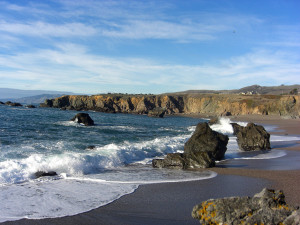With state park closures only a month away, California lawmakers are scrambling to send long-lasting aid to the state park system and keep the gates open.
Last week, the Assembly unanimously approved a bill that would limit the number of closures and establish new ways for Californians to contribute to state parks. Meanwhile, a Senate budget subcommittee has endorsed those voluntary measures and spotlighted surpluses in existing state funds that could provide even bigger bucks for parks.
The legislative efforts offer a system-wide response, even as solutions are hastily arranged to keep individual parks open. State park administrators announced last May that 70 California parks would close by July 1, one fourth of the entire system, to shave $22 million off a budget shortfall. Eighteen parks have since won temporary reprieves, mostly from impassioned nonprofit fundraising and local volunteer efforts. But there are dozens with no help in sight.
On the Assembly side, Rep. Jared Huffman (D-San Rafael) and Wesley Chesbro (D-North Coast) stepped up to the task in February, introducing A.B. 1589, the State Park Stewardship Act. The bill would cap the number of closures at 25 and use $10 million from a 2006 bond measure to finance entrepreneurial activities and fee collection. The bill would also allow residents to purchase annual passes to the parks through a check-off on tax returns and buy new state park license plates.
Sen. Noreen Evans (D-Santa Rosa) got the ball rolling in the Senate. With 20 parks on the closure list in her northern California district, she introduced two bills: S.B. 974 would require more public input in closure decisions; S.B. 1078 would encourage more businesslike management of parks.
Evans also asked Senate budget subcommittee chairman Sen. Joe Simitian (D-Palo Alto) if she could sit in on park-related budget discussions. Simitian, a veteran legislator with successes like the state’s hands-free cell phone law and its renewable-energy portfolio standard, welcomed her. Soon they began putting together a comprehensive package of park proposals that went far beyond her two bills.
“If you look at the impact theses closures could have on the state’s economy, you just think, there’s got to be a better way,” Simitian said.
Announced on May 9, Evans and Simitian’s Sustainable Parks Proposal sailed out of the Senate budget subcommittee with minor changes on May 23. If the measure makes it to the finish line on June 15, when the state budget is supposed to be approved, it could eliminate the state parks department’s $22 million budget gap and make at least a small dent in its $1.3 billion in deferred maintenance.
Finding the money at the heart of that package was “utterly serendipitous,” Simitian says. Because his subcommittee oversees transportation as well as parks, he noticed a $500 million surplus in the state’s “motor vehicle account.” Paid for by auto registration fees, that fund is used for road maintenance, construction, and law enforcement — the California Highway Patrol, for example.
While the parks department was spending $15 million a year on roads, it wasn’t tapping these funds. So he and Evans proposed that 2 percent of that surplus — or $10 million a year — be used for road-related work in state parks.
Twenty parks showed up on the closure list due to problems with their water or sewage systems. To help solve that problem, the senators propose appropriating $10 million annually as long-term loans from a federal Clean Water Revolving Loan Fund for the next five years.
In addition, the Senate budget measure would give the parks department the ability to use $11 million in gas tax money currently going to the Off-Highway Vehicle Trust Fund for broader park purposes. Currently, that fund has a more than $60 million surplus.
The Senate measure would also allow individual parks to keep half the money they raise, rather than all of it going to Sacramento, and would loosen requirements that all park rangers have police training.
At hearings in May, the Senate measure generated minor controversy. Groups representing highway patrol officers and off-road-vehicle recreation testified that they might need the surpluses for their own projects. And lawmakers asked whether repurposing those funds would be legal, a question Simitian believes has been resolved with a thumbs-up from the state’s nonpartisan Office of Legislative Counsel.
Evans’ two bills won approval from the Senate on May 31, and both of the more comprehensive park-rescue measures – Assembly Bill 1589 and the Senate budget package — are moving quickly. The Assembly bill is now in the Senate’s hands; the Senate measure is being scrutinized by an Assembly budget subcommittee before it goes to the full budget committees of the Senate and the Assembly.
Suggesting spending more taxpayer dollars for parks at a time when the state has a $16 billion budget deficit will probably raise eyebrows. But nobody’s asking for new taxes — just money from existing funds, Simitian says.
“Parks are an extraordinary economic development tool,” he adds. “They are job creators.”
Follow these links for more information about the Park Stewardship Act in the Assembly and the Sustainable Parks Proposal in the Senate.

.jpg)



